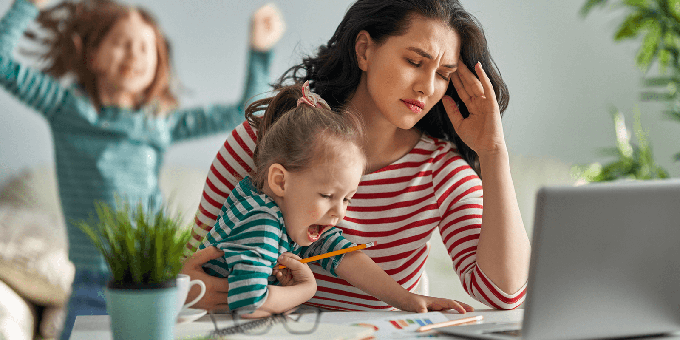
What to do about the schools is set to return centre stage when the national cabinet later this week discusses the next steps in managing the coronavirus – specifically, the first stages of the way to “the other side”.
Scott Morrison, who has always wanted kids at school and insisted schools must stay open for working parents needing them and for vulnerable children, is pushing hard to get as many students back on site as possible.
The national cabinet is due to canvass schools on Thursday, including protections for teachers’ health if more children attend.
The NSW Teachers Federation has said the return should be in stages, starting with Year 12 and kindergarten.
The schools debate is especially interesting not just given its intrinsic importance but also because of its multiple stakeholders – parents, schools themselves, the teachers union, premiers, federal government. It has involved a good deal of pushing and shoving.
Initially, many anxious parents simply wanted to keep their children home, and insisted on doing so. They weren’t reassured by the official health advice that the virus presented a low risk for children and therefore they were safe at school (for vulnerable children, being removed from school presents its own danger).
The teachers union was concerned about the safety of teachers, some of whom are older and therefore in a higher risk category.
State premiers Daniel Andrews and Gladys Berejiklian wanted to have only a minimum of children in their schools.
Meanwhile many non-government schools made arrangements for online learning. This produced a sharp response from the federal government: last week Education Minister Dan Tehan told independent schools they faced funding cuts if they didn’t provide for those children who needed to be on site.
In the first round of the schools debate, states and territories simply went their own way, effectively ignoring Morrison’s preference.
As schools move into the second term, learning online is in full swing in most of the country.
Victoria, for example, has said this will be its model as term two starts this week. Queensland has announced that apart from children of essential workers and vulnerable children, students will learn online for the first five weeks of the term (taking it to May 22).
But Morrison is making schools a priority as talk turns to unlocking restrictions. He is (rightly) cautious about lifting many bans that would reduce social distancing but he believes children should be in the vanguard of the march to the “other side”.
He wants a consistent approach across the country. He points out that in South Australia, for example, school attendance has been much higher than in NSW and Victoria.
Morrison advances two arguments – education and the economy.
Children should not lose a year of their education, he said again on Tuesday.
“If online and distance learning was a better way of delivering education, then that’s what we’d do all the time. We wouldn’t have schools, we wouldn’t have all of that infrastructure,” he told Sky.
“We need to get kids back into school, and that’s increasingly being recognised around the world – the French President [Emmanuel Macron] has made similar comments today.” (Macron is particularly concerned about inequality – disadvantaged students who lack digital tools and parental help.)
Key to Morrison’s stand is his economic take. “Getting kids back into school will also free up, I think, more opportunities in our economy, to get to more economic activity going,” he said.
While many businesses have shut down, no doubt quite a few – especially small businesses, whether sole operators or with a few staff – are on the edge. With their children back at school, these owners and staff might find it easier to continue.
Certainly many parents who’ve been forced to work from home – which requires its own adjustments – are feeling the acute strain of juggling their job and supervising their school-age children.
Australia’s apparent success in containing the virus has contributed to a change in the attitude of parents, as has their experience in having to actually deal with home-bound children.
They might have been anxious to remove their kids at first but now – with the health advice still giving an unwavering green light – many are likely be more than willing to hand their stir-crazy offspring back into the care of teaching professionals.
State governments can expect pressure from parents that’s very different compared with just weeks ago.
Author Bio: Michelle Grattan is Professorial Fellow at the University of Canberra
